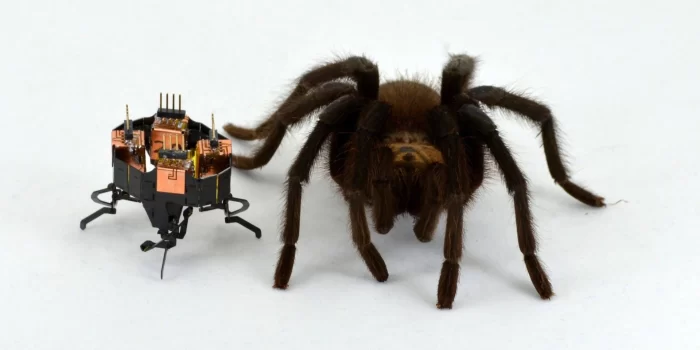Shape-shifting robots are becoming a disruptive technology that have the potential to completely change a number of sectors. These adaptable robots have gained interest in a variety of industries, including disaster relief, space exploration, and healthcare. They can change their shape to fit various activities and conditions. A recent development at the University of Colorado Boulder has resulted in the creation of mCLARI, a shape-changing robot inspired by a spider that has great potential for use in rescue missions and other contexts.
MCLARI, a tiny robot measuring only two centimeters in length, possesses the unique ability to passively change its shape, allowing it to navigate narrow and confined spaces without the need for external control. This passive shape-changing function enables the robot to swiftly traverse challenging terrains and access hard-to-reach areas. Compared to its predecessor, this latest version is smaller and faster, weighing a mere 0.97 grams. The miniaturization was achieved through an origami-based design and laminate fabrication technique.

One of mCLARI’s standout features is its impressive carrying capacity, as it can transport payloads weighing over three times its own weight. This design combines the flexibility of soft robots with the agility of rigid ones, making it exceptionally versatile in various scenarios.
The robot operates with four independently actuated leg modules, each driven by piezoelectric actuators. These legs are interconnected through passive body joints, allowing the robot to adapt to external constraints. Notably, it retains 80 percent of its actuation power, enabling exceptional agility.
MCLARI also demonstrates “omnidirectional laterally confined locomotion,” meaning it can move in all directions within constrained spaces. In practical tests, it achieved remarkable running performance, reaching a top speed of approximately three times its body length per second. This unique ability makes it a valuable asset for supporting first responders in disaster situations, as it can easily access tight spaces.

Furthermore, this technology has the potential to revolutionize inspection and maintenance tasks in complex machines, such as jet engines. The robot’s deformable nature allows it to access inspection access ports and perform various tasks more effectively.
The development of mCLARI brings us closer to the creation of insect-sized robots that can navigate natural surfaces as effectively as their biological counterparts. The team behind this innovation envisions these robots as valuable tools for addressing social needs, including search and rescue operations, environmental monitoring, and even medical procedures. The shape-changing spider robot represents a significant step toward unlocking the full potential of robotics in various industries, promising a more adaptable and agile future for these cutting-edge technologies.


